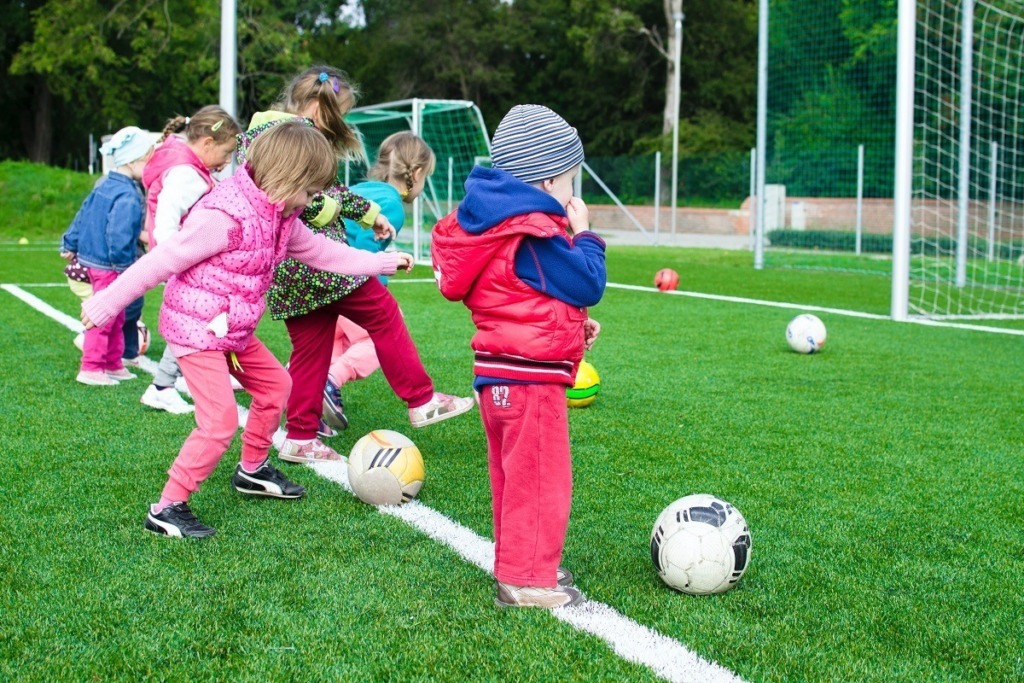
Written by Sarah Milano
According to the World Health Organization (WHO), children from the ages of five to seventeen should engage in sixty minutes of physical activity every day. Not only should they be active, but according to the WHO’s guidelines in “Physical Activity and Young People,” these children should engage in “moderate” and “vigorous” activities[1]. Physical activities should actually be aerobic, according to the WHO, in order to strengthen muscles and bones, to increase metabolic rates, and to improve respiratory functions.
Of course these guidelines do not apply if a child’s specific medical conditions indicate that such activity would possibly harm the child or weaken respiratory systems, but keeping children from reaching their physical potential can be harmful, as well. Children who are active are more likely to grow up to be active, healthy adults. Healthy bodies fight sickness, and children who are encouraged to stay active will more likely remain healthy. These children also become less likely to engage in unhealthy, passive, and sedentary activities that often make children unhealthy and that always take up time that could be spent engaged in physical activities that strengthen muscles and build confidence.
The World Health Organization suggests several possible activities that range from playing games to going for a walk to completing household chores. Regardless of what specific activities children and their parents favor, variety is always good. In fact, at least three times a week, children should engage in continuous aerobic activity that strengthens their endurance and stamina[2]. In general, children should be more active for longer periods of time. Not only do these guidelines specify that children should run, bike, work, or play actively for sixty minutes a day, but the WHO even states that “Amounts of physical activity greater than 60 minutes provide additional health benefits.”
As parents, we are always concerned; we do not want our children to wear themselves out. We wonder, sometimes, if our children might actually be doing too much. Can children exercise too much? Can they become too active so that their activity begins to break them down? Does virtually constant activity hurt children's development?
The answer to these questions is almost universally no. Unless children have a medical condition that has to be monitored and unless the active engagement takes away from time they need for educational purposes, regular and playful activity will boost a child’s metabolism. A higher metabolism creates all sorts of benefits. The food a child eats is less likely to be stored as fat, leading to obesity. Furthermore, the activity improves circulation that increases brain power. Most noticeably, though, the use of energy and the increased metabolism helps children feel better—feel more alive. When this happens, they are likely to increase activity, burn more calories, and feel better. This beneficial cycle might be summed up this way: Children have to burn energy to create energy.
In many ways, building our body’s energy supply resembles the way we build muscles. Certainly muscles get tired when they are worked, and children get tired when they play, but over time, the capacity to do more increases. Adults experience this beneficial cycle, too, and they experience increased energy levels when they work out regularly. Still, parents may worry that a child may get tired or needs more rest just because the parents, themselves, could not possibly stay that active, or at least because they believe they couldn’t stay that active.
As parents, we have to remember that our children are growing. Their bodies are gaining strength as they exercise, and their youth and vigor not only can handle increased physical activity, but it indeed needs that activity. Sometimes, we get tired just watching them play all day, but if we really watch and see how much fun they are having, we may actually get inspired just watching them—so inspired that we join them. We encourage them, and they encourage us; with this system, we have another beneficial, healthy cycle that strengthens bodies and improves physical and emotional well-being.
[1] http://www.who.int/dietphysicalactivity/factsheet_young_people/en/, Page 16
[2] http://whqlibdoc.who.int/publications/2010/9789241599979_eng.pdf



